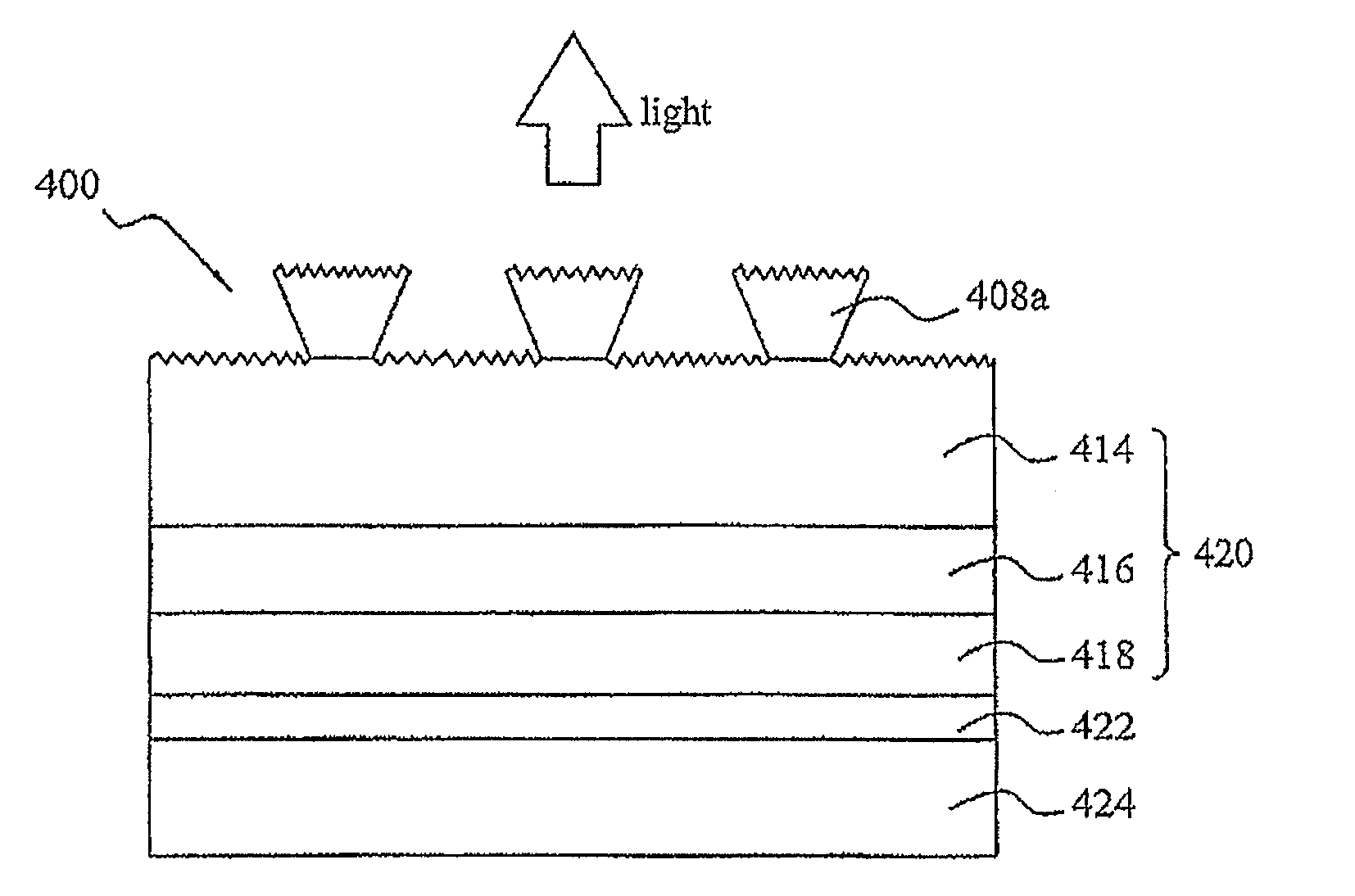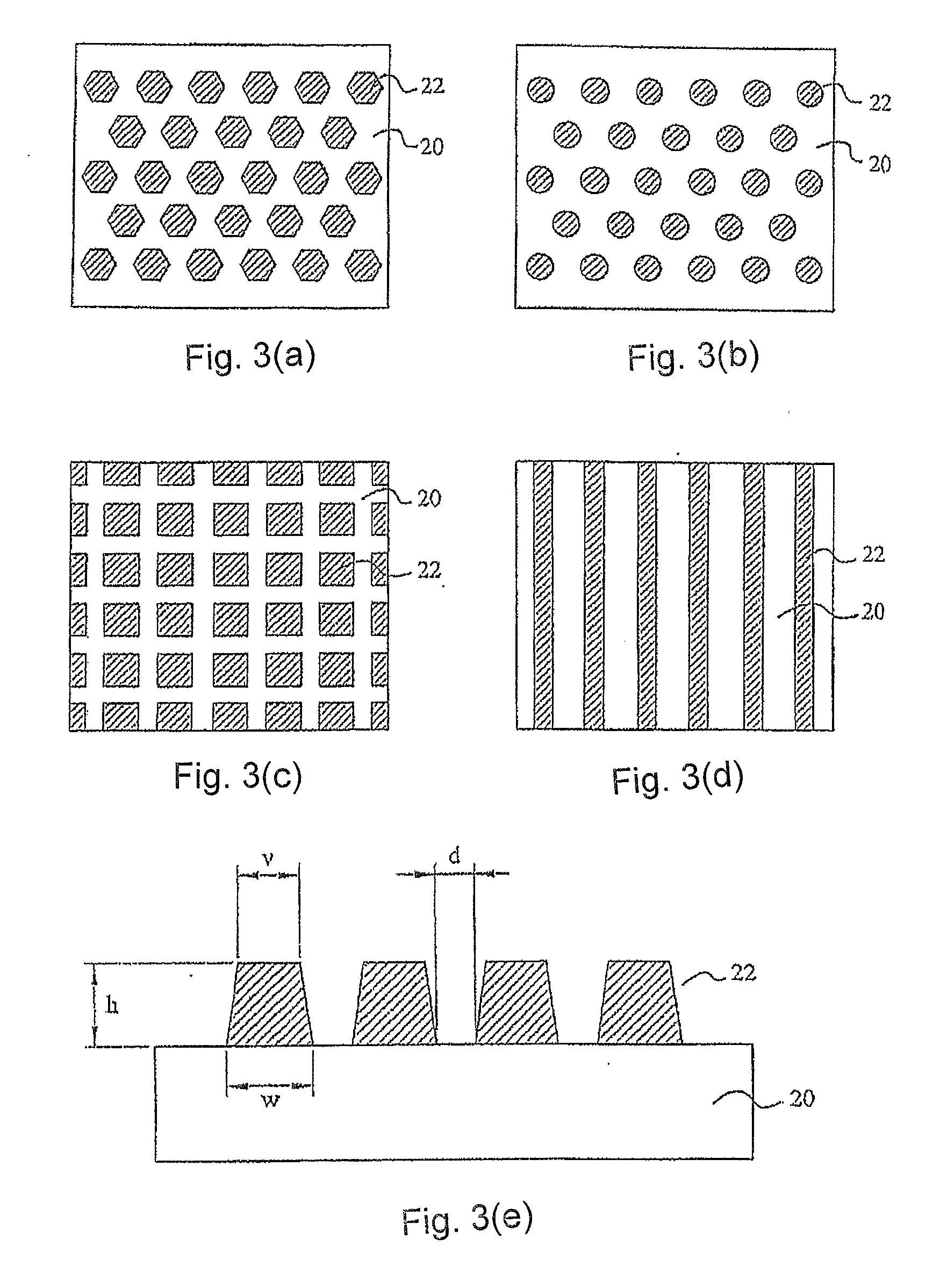Method for manufacturing free-standing substrate and free-standing light-emitting device
a technology of free-standing substrates and light-emitting devices, which is applied in the direction of chemically reactive gases, crystal growth processes, chemistry apparatuses and processes, etc., can solve the problems of gan film defects, yield down or fragmentation, and increase the power consumption of a single led from several microwatts to 1 watt, 3 watts or even more than 5 watts, etc., to achieve uniform etching, poor repeatability, and not conductive to mass production
- Summary
- Abstract
- Description
- Claims
- Application Information
AI Technical Summary
Benefits of technology
Problems solved by technology
Method used
Image
Examples
embodiment 1
[0077]FIG. 4 is a flow chart explaining an embodiment of manufacturing a free-standing substrate of the present invention.
[0078]Referring to FIG. 5, a nitride film 204, an AlN film 206 (functioning as a sacrificial layer), and a nitride film 208 are sequentially grown on a sapphire substrate 202, and these three layers of films are defined as a first layer 210 having a sacrificial layer. A mask layer 212 is formed on the first layer.
[0079]Referring to FIG. 6, the mask layer 212 is patterned into a patterned mask layer 212a by photolithography.
[0080]Referring to FIG. 7, the first layer 210 is etched into a protrusion-like first layer 210a having a structure of a plurality of columns by using the patterned mask layer 212a as an etching mask, wherein the protrusion-like first layer 210a comprises a protrusion-like nitride layer 204a, a protrusion-like AlN film 206a, and a protrusion-like nitride layer 208a. Next, as shown in FIG. 8, the patterned mask layer 212a is removed.
[0081]Referr...
embodiment 2
[0083]Referring to FIG. 12, an InxAlyGa1-x-yN film (0≦x≦1, 0≦y≦1, x+y≦1) functioning as a sacrificial layer 306 is grown on a sapphire substrate 302. A mask layer 312 is formed on the sacrificial layer 306.
[0084]Referring to FIG. 13, the mask layer 312 is patterned into a patterned mask layer 312a by photolithography.
[0085]Referring to FIG. 14, the sacrificial layer 306 is etched into a protrusion-like sacrificial layer 306a having a structure of a plurality of protrusions by using the patterned mask layer 312a as an etching mask. Then, as shown in FIG. 15, the patterned mask layer 312a is removed.
[0086]Referring to FIG. 16, a nitride layer 320 is grown on the protrusion-like sacrificial layer 306a by epitaxial lateral overgrown.
[0087]Referring to FIG. 17, AZ400K (a mixture solution of KOH and H3BO3 as main components, manufactured by Clariant Company) is used as an etchant to etch away the protrusion-like sacrificial layer 306a, in order to separate the nitride layer 320 from the s...
embodiment 3
[0088]FIG. 19 is a flow chart explaining an embodiment of manufacturing a free-standing light-emitting device of the present invention.
[0089]Referring to FIG. 20, a nitride film 404, an AlN film 406 (functioning as a sacrificial layer), and a nitride film 408 are sequentially grown on a sapphire substrate 402, and these three layers of films are defined as a first layer 410 having a sacrificial layer. A mask layer 412 is formed on the first layer.
[0090]Referring to FIG. 21, the mask layer 412 is patterned into a patterned mask layer 412a by photolithography.
[0091]Referring to FIG. 22, the first layer 410 is etched into a protrusion-like first layer 410a having a structure of a plurality of protrusions by using the patterned mask layer 412a as an etching mask, wherein the protrusion-like first layer 410a comprises a protrusion-like nitride layer 404a, a protrusion-like AlN film 406a, and a protrusion-like nitride layer 408a. Next, as shown in FIG. 23, the patterned mask layer 412a is...
PUM
 Login to View More
Login to View More Abstract
Description
Claims
Application Information
 Login to View More
Login to View More - R&D
- Intellectual Property
- Life Sciences
- Materials
- Tech Scout
- Unparalleled Data Quality
- Higher Quality Content
- 60% Fewer Hallucinations
Browse by: Latest US Patents, China's latest patents, Technical Efficacy Thesaurus, Application Domain, Technology Topic, Popular Technical Reports.
© 2025 PatSnap. All rights reserved.Legal|Privacy policy|Modern Slavery Act Transparency Statement|Sitemap|About US| Contact US: help@patsnap.com



